Exoplanets: Definition, How Many Are There, Discoveries
Exoplanets are planets orbiting stars outside our solar system. Astronomers discovered the first confirmed exoplanet in 1992. Thousands of exoplanets have been found since, ranging from rocky terrestrial worlds to massive gas giants. Some exoplanets exist in habitable zones of stars, potentially providing conditions suitable for life as we know it.
Trillions of exoplanets are estimated to exist in the universe. A 2019 Astrophysical Journal study suggests 70 billion trillion planets. The Milky Way alone contains an estimated 7 billion Earth-sized planets. Scientists have confirmed over 5,741 exoplanets as of July 2024. Total numbers likely underestimate actual exoplanet count due to limitations in detection methods.
Astronomers discover exoplanets using multiple indirect methods. The transit method detects star light dimming as planets pass in front. Radial velocity measures star wobbles caused by orbiting planets’ gravity. Astrometry tracks star motion to find exoplanets. Direct imaging captures light from exoplanets using powerful telescopes. Spectroscopy analyzes light filtered through an exoplanet’s atmosphere during transit.
Earth-like exoplanets exist in the universe. Several potentially habitable worlds have been discovered orbiting distant stars. Earth-sized planets are relatively common, with estimates suggesting billions could exist in habitable zones across our galaxy. Kepler-452b and Proxima b are examples of Earth-like exoplanets that have captured scientists’ attention.
UY Scuti b is the biggest exoplanet ever found. UY Scuti b orbits the star UY Scuti in the constellation Scutum, 9,500 light-years from Earth. UY Scuti b has a radius 21.9 times that of Jupiter. Researchers discovered UY Scuti b in 2012 using the transit method.
Exoplanets come in various types. Gas giants are massive planets composed mainly of gaseous material, with masses ranging from 0.3-10 Jupiter masses. Neptunian exoplanets are similar to Neptune, with masses between 0.1-0.3 Jupiter masses. Super-Earths have masses between 2-10 Earth masses. Terrestrial exoplanets are rocky planets with masses between 0.5-2 Earth masses. Mini-Neptunes, hot Jupiters, ocean planets, desert planets, and rogue planets are other types of exoplanets discovered so far.
What is an exoplanet?
Exoplanet is a planet that orbits a star outside our solar system. Astronomers discovered the first confirmed exoplanet in 1992. Thousands of exoplanets orbit distant stars, ranging from rocky terrestrial worlds to massive gas giants. Certain exoplanets exist in habitable zones of stars, providing conditions potentially suitable for life as we know it. Scientists and space agencies worldwide actively study exoplanets, making regular discoveries and advancing our understanding of these distant worlds.
Exoplanet orbits define their paths around host stars. Star mass, planet mass, and other planets in the system influence these orbits. Exoplanet masses range from Earth-like to massive gas giants. The radial velocity method and transit studies determine exoplanet mass. Exoplanet sizes vary greatly, from small rocky worlds to Jupiter-sized gas giants.
Hot Jupiters, super-Earths, mini-Neptunes, and rocky planets are common exoplanet types. Exoplanet systems contain planets orbiting a single star. Some systems resemble our solar system, while others have different architectures. Exoplanets orbit various stars, including main-sequence stars like the Sun, red dwarfs, neutron stars, and white dwarfs.
Astronomers use multiple methods to detect exoplanets. The transit method measures starlight decrease as planets pass in front of their stars. The radial velocity method detects star wobble caused by orbiting planets. Direct imaging captures actual images of exoplanets using powerful telescopes.
Exoplanet atmospheres contain gases surrounding these distant worlds. Scientists analyze atmospheric composition to determine potential habitability. Exoplanet temperatures range from extremely hot to cold, with diverse atmospheric characteristics.
Prominent astronomers have contributed significantly to exoplanet research. Michel Mayor discovered the first exoplanet and won a Nobel Prize for his work. Sara Seager studies exoplanet atmospheres, while Lisa Kaltenegger directs exoplanet research at the Max Planck Institute. Exoplanet studies have revolutionized our understanding of planetary formation and advanced the search for extraterrestrial life.
How many exoplanets are there in the universe in theory?
Researchers estimate trillions of exoplanets exist in the universe. A 2019 Astrophysical Journal study suggests 70 billion trillion planets. The Milky Way alone contains an estimated 7 billion Earth-sized planets. Scientists have confirmed over 4,000 exoplanets to date. The 5000th exoplanet was discovered in 2019. Total numbers likely underestimate actual exoplanet count.
Confirmed exoplanet discoveries have steadily increased over time. Astronomers verified 4,852 exoplanets as of October 2021. The number rose to 5,000 confirmed exoplanets by March 2022. July 2024 saw a further increase to 5,741 confirmed exoplanets. Exoplanets are planets that orbit stars outside our solar system. Exoplanets have diverse sizes and types, ranging from Earth-like rocky worlds to gas giants larger than Jupiter. Exoplanets orbit stars of all sizes and ages, showcasing the variety of planetary systems in the universe.
The study of exoplanets is a rapidly evolving field with new discoveries made regularly. Scientists’ understanding of the universe and its mysteries continues to grow. The actual number of exoplanets in the universe will likely surpass current estimates as detection methods improve and more celestial bodies are explored.
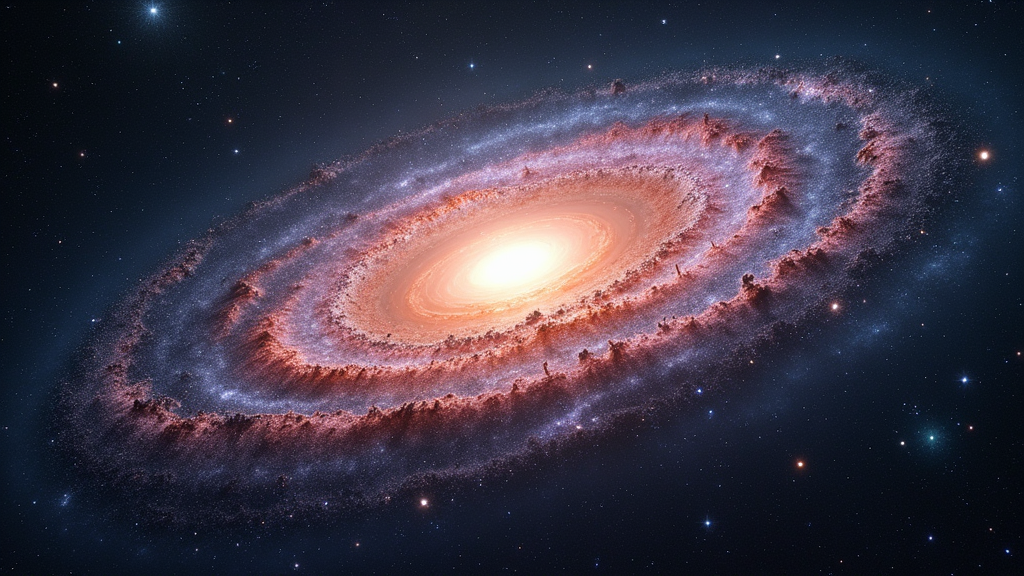
How many exoplanets have been discovered and confirmed so far?
NASA Exoplanet Archive reports 5,741 confirmed exoplanets as of March 2023. Confirmed exoplanets exist in 4,312 planetary systems. Scientists have identified 960 systems containing multiple planets. Exoplanets include gas giants, rocky planets, super-Earths, mini-Neptunes, and hot Jupiters. Kepler-452b and TRAPPIST-1e are notable potentially habitable exoplanets.
These confirmed exoplanets represent only a fraction of the billions estimated to exist in our galaxy. Exoplanets are planets that orbit stars outside our solar system. Exoplanets confirmed through various methods are added to the Exoplanet Archive. Exoplanets discovered by scientists come in a wide range of sizes and types. Exoplanets do orbit within the habitable zones of their stars. Exoplanets have expanded our understanding of planetary formation and evolution.
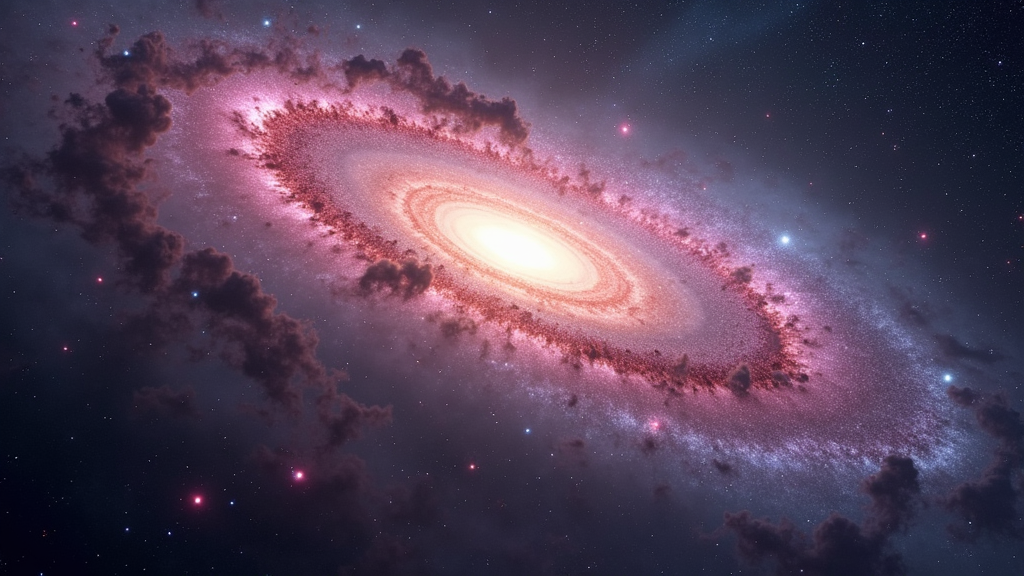
How many exoplanets are there in the Milky Way?
Tens of billions of exoplanets exist in the Milky Way galaxy. A 2020 Astronomical Journal study estimates 70 billion exoplanets. James Webb Space Telescope will discover thousands of new exoplanets and refine these estimates. James Webb Space Telescope enables scientists to study exoplanet formation, evolution, and atmospheres in unprecedented detail.
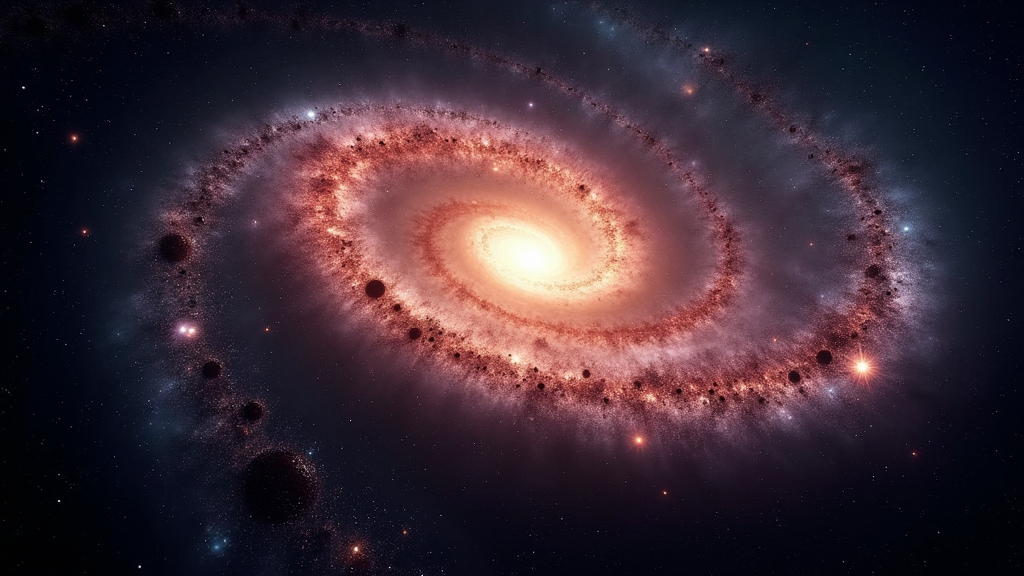
How are exoplanets discovered?
Astronomers discover exoplanets using multiple indirect methods. Transit method detects star light dimming. Radial velocity measures star wobbles. Astrometry tracks star motion. Space-based telescopes like Kepler employ transit method. Ground-based telescopes use spectroscopy. Scientists analyze starlight for planet signatures. Exoplanets are found by observing their effects on host stars.
The radial velocity method detects star wobble caused by an orbiting exoplanet’s gravity. Mayor and Queloz (1995) analyzed spectroscopy to detect wobble using the radial velocity technique. Astronomers monitor star motion to identify potential exoplanets. The radial velocity method has been instrumental in discovering numerous exoplanets since its first successful application.
Direct imaging captures light from exoplanets using powerful telescopes. Marois et al. (2008) took direct images of exoplanets using advanced techniques. Astronomers observe electromagnetic radiation emitted or reflected by exoplanets to gather information about their properties. Direct imaging is effective for detecting young, hot exoplanets orbiting far from their host stars.
Astrometry measures star position changes to find exoplanets. Perryman (2009) used astrometry to measure star position and monitor star motion. Lattanzi et al. (2000) employed astrometry to detect orbital variations caused by exoplanets. Astrometry is especially useful for discovering exoplanets around nearby stars.
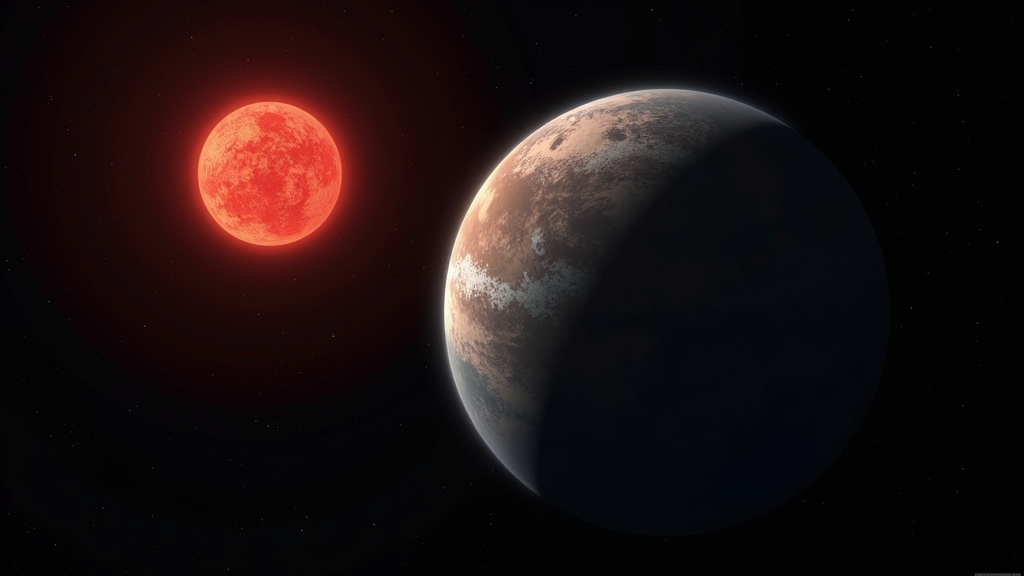
Spectroscopy analyzes light filtered through an exoplanet’s atmosphere during transit. Gray (1992) analyzed absorption lines in stellar spectra to find exoplanets. Queloz et al. (2009) used spectroscopy to study exoplanet atmospheres and composition. Spectroscopy provides valuable information about exoplanet characteristics and potential habitability.
Lazio et al. (2009) attempted to detect radio emissions from exoplanets using radio telescopes. Deming et al. (2005) observed infrared radiation from exoplanets using space-based telescopes. These methods complement primary discovery techniques and provide additional data about exoplanets.
When was the first exoplanet discovered?
Astronomers Alexander Wolszczan and Dale Frail discovered the first exoplanets on January 9, 1992. Two planets, nicknamed Poltergeist and Phobetor, were found orbiting the pulsar PSR B1257+12. Scientists used the pulsar timing method to detect these planets, officially designated PSR B1257+12 B and PSR B1257+12 C. The discovery marked the first detection of planets outside our solar system.
Exoplanets were observed long before their official confirmation. Edward E. Barnard noticed peculiar motion of the star Wolf 359 in 1917, which was recognized as evidence of an exoplanet in 2016. Bruce Campbell, Gordon Walker, and Stephenson Yang detected the first exoplanet orbiting the star Gamma Cephei in 1988, confirmed in 2003. Wolszczan and Frail made the first confirmed exoplanet discovery in 1992, detecting two planets orbiting the neutron star PSR B1257+10. Michel Mayor and Didier Queloz discovered the first planet around a sun-like star, 51 Pegasi, in 1995. David Charbonneau’s team discovered the first exoplanet using the transit method in 1999, orbiting the star HD 209458.
Exoplanets have been detected in thousands since these early discoveries. The NASA Exoplanet Archive has recorded over 4,100 confirmed exoplanets as of 2024. Exoplanets orbit a wide range of stars, from small, cool red dwarfs to large, hot blue giants. Exoplanet survey missions like the Kepler space telescope and the Transiting Exoplanet Survey Satellite (TESS) have revealed that exoplanets are common in the universe.
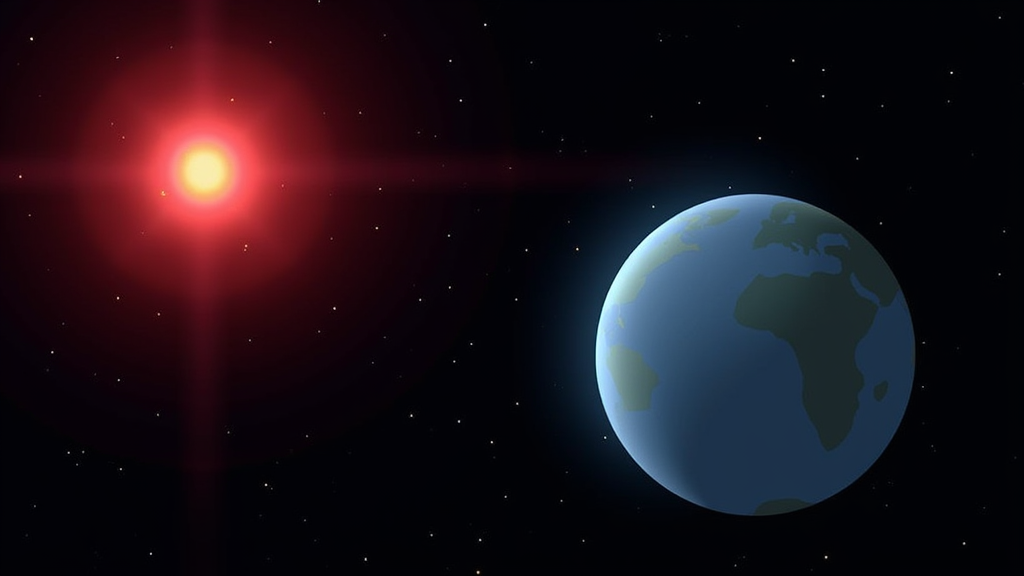
Are there Earth like exoplanets?
Earth-like exoplanets exist in the universe. Astronomers have discovered several potentially habitable worlds orbiting distant stars. Earth-sized planets are relatively common, with estimates suggesting billions could exist in habitable zones across our galaxy.
Earth-like exoplanets share key characteristics with our home planet. These worlds have sizes and masses similar to Earth, ranging from 0.8 to 1.6 Earth radii. Rocky compositions are essential for Earth-like planets, providing a solid surface for potential life to develop. The presence of water is crucial for habitability, and some exoplanets show evidence of liquid water on their surfaces. Potential habitable atmospheres have been detected on several exoplanets through spectroscopic observations.
Earth-like systems mirror aspects of our solar system. Exoplanets orbiting within the habitable zone of their star have temperatures suitable for liquid water to exist on their surfaces. The habitable zone lies between 0.95 and 1.37 astronomical units (AU) from the star. Some exoplanetary systems, like TRAPPIST-1, feature multiple Earth-sized planets orbiting a single star.
Earth scientists employ various methods to identify Earth-like exoplanets. Observations and data collection from space-based telescopes like Kepler and TESS have revealed thousands of exoplanet candidates. Advanced instruments such as the James Webb Space Telescope provide detailed atmospheric data for promising exoplanets. Astronomers analyze this information to determine the likelihood of habitability and Earth-like conditions.
Earth exploration faces challenges in confirming the true Earth-like status of exoplanets. Current technology limits our ability to directly observe these distant worlds in detail. Obtaining precise atmospheric data remains difficult due to the vast distances involved. Uncertainties in determining exact planetary properties persist, requiring further advancements in observational techniques and data analysis.
Earth-sized exoplanets like Kepler-452b and Proxima b have captured scientists’ attention. Kepler-452b, located 1,400 light-years away, has a radius 60% larger than Earth and orbits a Sun-like star. Proxima b, the closest known exoplanet at 4.2 light-years, has a mass 1.3 times that of Earth and orbits within its star’s habitable zone. These examples demonstrate the diversity of potentially Earth-like worlds discovered so far.

How many Earth sized exoplanets are there?
Earth-sized exoplanets exist in vast numbers throughout the universe. Scientists estimate 40 billion Earth-sized planets potentially orbit in habitable zones of Sun-like stars. The Milky Way galaxy alone is believed to contain approximately 6 billion Earth-like planets.
Confirmed Earth-sized exoplanets are fewer in number but still significant. Researchers have identified about 200 exoplanets potentially similar to Earth in size and mass. Among these, 24 super habitable worlds have been discovered, orbiting within their stars’ habitable zones. TOI 700 e stands out as a notable example, measuring 95% of Earth’s size and likely possessing a rocky composition.
Where are the most Earth-like exoplanets located?
Earth-like exoplanets orbit within habitable zones of TRAPPIST-1, Gliese 667 Cc, Kepler-452, and Proxima b systems. TRAPPIST-1 contains seven Earth-sized planets 39 light-years away. Gliese 667 Cc lies 22 light-years distant. Kepler-452 resides 1,400 light-years away. Proxima b exists 4.2 light-years from Earth. These systems feature rocky worlds potentially harboring liquid water and life.
The TRAPPIST-1 system is located 39 light-years away in the constellation Aquarius. Seven Earth-sized planets orbit an ultracool dwarf star in this system. Three planets (e, f, and g) reside within the habitable zone, potentially supporting liquid water on their surfaces. TRAPPIST-1e has 0.92 times Earth’s radius and orbits at 0.029 AU from its star. TRAPPIST-1f is 1.04 times Earth’s radius, orbiting at 0.038 AU. TRAPPIST-1g measures 1.13 times Earth’s radius and orbits at 0.047 AU.
Kepler-452b is situated 1,400 light-years away in the constellation Cygnus. The planet orbits a G-type star similar to the Sun, completing an orbit every 385 days. Kepler-452b is 60% larger in diameter than Earth and orbits at a distance of 1.05 AU from its star.
TOI 700 e is found 100 light-years from Earth in the constellation Dorado. The terrestrial exoplanet orbits a small, cool M-dwarf star every 37.4 days. TOI 700 e has 1.05 times Earth’s radius and orbits at 0.063 AU from its star.
Gliese 12 b is located 40 light-years distant from Earth. The planet is larger than Venus and orbits within its star’s habitable zone.
Kepler’s strongest candidate for an Earth-like planet was announced in 2020. The unnamed exoplanet orbits a G-type star (KIC 9832890) 1,700 light-years away in the constellation Lyra. It has 1.2 times Earth’s radius and orbits at 1.02 AU from its star.
What is the biggest exoplanet ever found?
UY Scuti b is the biggest exoplanet ever found. UY Scuti b orbits the star UY Scuti in the constellation Scutum. UY Scuti b has a radius 21.9 times that of Jupiter. Researchers discovered UY Scuti b in 2012 using the transit method. UY Scuti b is located 9,500 light-years from Earth.
Exoplanet surveys have revealed these massive worlds beyond our solar system. The HATNet Exoplanet Survey discovered HAT-P-67b using a network of small telescopes. Astronomers use various detection methods to find exoplanets, including the transit method and radial velocity measurements. Scientists compare exoplanet sizes to Jupiter, the largest planet in our solar system. The discovery of massive exoplanets provides insights into planetary formation and evolution.
What are the most abundant types of exoplanets found so far?
Super-Earths and mini-Neptunes are the most abundant types of exoplanets found so far. These planets have sizes 2-4 times Earth’s and masses 5-15 times Earth’s. Scientists believe super-Earths and mini-Neptunes are quite common in the galaxy. Hot Jupiters, large gas giants orbiting close to stars, are abundant exoplanets.
Exoplanets span a wide range of sizes, masses, and orbital periods. Exoplanets discovered have radii ranging from 0.1 to 20 times that of Jupiter and masses ranging from 0.01 to 10 times Jupiter’s mass. Exoplanets found to date have radii ranging from about 1,000 km to over 200,000 km, showcasing the vast diversity of planetary types in the universe.
Is there life on exoplanets?
Scientists actively research the possibility of life on exoplanets. No definitive evidence of exoplanet life currently exists. Researchers aim to find unambiguous biosignatures on distant worlds.
Exoplanet detection and studies have revealed over 4,100 confirmed planets. Thousands more exoplanet candidates await confirmation. Exoplanets data provides insights into size, mass, and orbital characteristics. Exoplanets composition influences the potential for life. Astronomers use spectroscopy to determine exoplanet atmosphere composition. Scientists use transit photometry to study exoplanet surface composition.
Exoplanets atmosphere analysis plays a crucial role in assessing habitability. K2-18b exoplanet has an atmosphere that potentially supports life. The atmosphere of K2-18b contains water vapor and methane. Stable atmospheres influence the potential for life on exoplanets. Astronomers use spectrographic analysis to study exoplanets atmosphere. Disequilibrium gases like oxygen and methane signal life on exoplanets.
Data collection and interpretation drive exoplanets research forward. Space telescopes have collected vast amounts of exoplanets data. The Kepler Space Telescope discovered many exoplanets using the transit method. The Transiting Exoplanet Survey Satellite continues to find new exoplanets. Scientists have developed various techniques to identify distant exoplanets. The transit method accounts for over 75% of all exoplanet discoveries.
Ongoing research and technological advancements improve our understanding. The James Webb Space Telescope will study exoplanets atmosphere in unprecedented detail. JWST will search for oxygen, methane, and other biomarkers. The TESS mission aims to discover thousands of new exoplanets. Exoplanets studies have increased understanding of planetary formation and evolution.
Limited direct observation capabilities challenge exoplanets research. Current technology limits definitive life detection on exoplanets. Exoplanets detection challenges astronomers due to small size and distance. Scientists continue searching many promising exoplanet candidates. Researchers use various methods to detect exoplanets and search for life signs.
Difficulty in analyzing exoplanet atmospheres hinders progress. Scientists debate the existence of life on exoplanets. Detecting life remotely challenges scientists greatly. Researchers actively engage in exoplanets atmosphere studies. Astronomers search for biosignatures in exoplanets atmosphere.
Uncertainties in exoplanet composition complicate the search for life. Some exoplanets have Earth-like conditions and compositions. Proxima b exoplanet orbits the nearest star to Sun and has a mass similar to Earth. 55 Cancri e exoplanet may have a surface composition similar to Earth. Exoplanets have a wide range of properties, including extreme surface temperatures.
Do exoplanets transmit radio signals?
Exoplanets do not transmit radio signals internally. Radio signals from exoplanets result from interactions with host stars. Magnetic field interactions, stellar winds, and planetary aurorae generate detectable radio emissions. Very Large Array (VLA) and ALMA detect these faint signals, in the 1-100 GHz range. Radio signal detection reveals exoplanet properties, magnetic fields, and habitability potential.
Exoplanets search has expanded to include radio observations. No confirmed radio signals from exoplanets have been detected to date. Several attempts to detect exoplanets radio signals have been made using radio telescopes. Siemion et al. (2013) used Arecibo Observatory and Green Bank Telescope for exoplanets radio signal detection. The SETI Institute’s Allen Telescope Array conducts exoplanets observations. Welch et al. (2009) used the Allen Telescope Array to search for signals from various exoplanets.
Exoplanets field continues to evolve rapidly. Radio astronomy offers potential for future exoplanet studies. Exoplanets are capable of emitting detectable radio waves through various mechanisms. Lazio et al. (2010) described mechanisms for exoplanets radio wave emission, including magnetospheric interactions, stellar wind, and planetary lightning. Exoplanets observations in the radio regime provide information about planet properties. Hallinan et al. (2015) detected radio emissions from exoplanet KELT-9b, suggesting a strong magnetic field and 36-hour rotation period.
Exoplanets radio signals are extremely faint and challenging to detect. Advanced radio telescopes will be needed for future exoplanets observations of radio emissions. The Square Kilometre Array (SKA) telescope will have unprecedented sensitivity and resolution for detecting exoplanets radio signals. Bentley et al. (2016) discussed SKA’s potential for exoplanets detection. The search for radio signals from exoplanets remains an active area in astrobiology and SETI research.
What are the types of exoplanets?
The types of exoplanets are listed below.
- Gas Giants: Massive planets composed mainly of gaseous material, similar to Jupiter and Saturn. Examples: HD 209458b, WASP-12b. Mass range: 0.3-10 Jupiter masses.
- Neptunian: Similar in composition and size to Neptune, with thick atmospheres of hydrogen/helium and rocky/ice cores. Examples: Kepler-30c, HAT-P-11b. Mass range: 0.1-0.3 Jupiter masses.
- Super-Earths: Mass higher than Earth’s but lower than gas giants, likely composed of rocky materials and dense atmospheres. Examples: Kepler-452b, Gliese 667 Cc. Mass range: 2-10 Earth masses.
- Terrestrial: Rocky planets similar in size and composition to Earth, Venus, and Mars. Examples: Proxima b, TRAPPIST-1e. Mass range: 0.5-2 Earth masses.
- Mini-Neptunes: Smaller versions of Neptunian planets. Examples: Kepler-138b, K2-33b. Mass range: 0.1-0.3 Earth masses.
- Hot Jupiters: Gas giants that orbit very close to their host stars, with surface temperatures above 1000 K. Examples: 51 Pegasi b, HD 189733b.
- Ocean Planets: Composed primarily of water, with surfaces that may be entirely covered in liquid water. Examples: Kepler-22b, Gliese 1214b.
- Desert Planets: Extremely hot surface temperatures, causing any water to evaporate, leaving a dry, desert-like environment. Examples: 55 Cancri e, WASP-12b.
- Rogue Planets: Ejected from their planetary systems and now wander through interstellar space. Examples: PSO J318.5-22, CFBDSIR 2149-0403.
Exoplanets come in diverse types. Rocky planets resemble Earth in size and mass. Gas giants exceed rocky planets in size. Neptunes fall between gas giants and rocky planets. Mini-Neptunes are smaller than Neptunes but larger than rocky planets. Ice giants contain high concentrations of ices. Ocean planets feature thick liquid water layers. Hot Jupiters orbit close to stars.
Neptunian exoplanets have a composition and size similar to Neptune, with thick atmospheres of hydrogen/helium and rocky/ice cores. Kepler-30c and HAT-P-11b are examples of Neptunian exoplanets, with masses between 0.1-0.3 Jupiter masses.
Super-Earths have a mass higher than Earth’s but lower than gas giants, likely composed of rocky materials and dense atmospheres. Kepler-452b and Gliese 667 Cc are examples of super-Earth exoplanets, with masses between 2-10 times that of Earth.
Terrestrial exoplanets are rocky planets similar in size and composition to Earth, Venus, and Mars. Proxima b and TRAPPIST-1e are examples of terrestrial exoplanets, with masses between 0.5-2 Earth masses.
Mini-Neptunes are smaller versions of Neptunian planets, with masses between 0.1-0.3 Earth masses. Kepler-138b and K2-33b are examples of mini-Neptune exoplanets.
Hot Jupiters are gas giants that orbit very close to their host stars, with surface temperatures above 1000 K. 51 Pegasi b and HD 189733b are examples of hot Jupiter exoplanets.
Ocean planets are composed primarily of water, with surfaces that may be entirely covered in liquid water. Kepler-22b and Gliese 1214b are examples of ocean planet exoplanets.
Desert planets have extremely hot surface temperatures, causing any water to evaporate, leaving a dry, desert-like environment. 55 Cancri e and WASP-12b are examples of desert planet exoplanets.
Rogue planets have been ejected from their planetary systems and now wander through interstellar space. PSO J318.5-22 and CFBDSIR 2149-0403 are examples of rogue planets.
What are the most interesting exoplanets?
The most interesting exoplanets showcase the diversity of worlds beyond our solar system. 55 Cancri e is an extremely hot exoplanet with a surface temperature of 3,900°F (2,148°C). OGLE-2005-BLG-390Lb represents the opposite extreme, existing as a cold, icy world 22,000 light-years away. J1407b stands out for its highly eccentric orbit, ranging from 3 to 13 astronomical units from its star.
TOI-1452b and Kepler-186f are temperate worlds with conditions potentially suitable for liquid water. WASP-12b orbits its star in just 26 hours, experiencing intense heat at 4,000°F (2,200°C). HD 189733b completes an orbit every 2.2 days and has a scorching surface temperature of 1,800°F (1,000°C).
TRAPPIST-1e is part of a system with seven Earth-sized planets, orbiting its star every 6.1 days. WASP-17b is notable for its extremely low density, with a mass only 0.49 times that of Jupiter. TOI-2109b is a recently discovered hot, dense world located 155 light-years away. Kepler-22b rounds out the list as another potentially habitable exoplanet, with a mass 2.4 times that of Earth and orbiting a star 600 light-years from us.
What are scary exoplanets?
Scary exoplanets possess extreme or unusual characteristics that seem frightening or dangerous. Gliese 1214 b is a water world with crushing pressure, located 47 light-years from Earth. HD 80606 b has a highly eccentric orbit causing wild temperature fluctuations, situated 190 light-years away. Kepler-78b orbits its star in just 8.5 hours, experiencing surface temperatures around 2,000°C. 55 Cancri e is a possible carbon planet with diamond-like composition, orbiting a star in the constellation Cancer.
CoRoT-2 b is an inflated hot Jupiter with intense radiation, located 900 light-years from Earth. Rogue planets wander through the galaxy unattached to stars, possessing strong gravitational fields. KELT-9b is an ultrahot Jupiter with temperatures hotter than some stars, reaching surface temperatures around 4,312°C. Upsilon Andromeda b experiences extreme temperature variations due to its highly eccentric orbit, situated 44 light-years away. TrES-2b is the darkest known planet, reflecting almost no light, with a surface temperature around 1,800°C.
What are unique exoplanets?
Unique exoplanets orbit stars outside our solar system. KELT-9b, detected as the hottest exoplanet in 2022, reaches 4,312°C. KELT-9b orbits a blue A-type star and is hotter than some red dwarf stars. Cool red dwarf exoplanets have temperatures as low as -200°C. 55 Cancri e, discovered in 2004, has 8.6 times Earth’s mass.
55 Cancri e is a super-Earth exoplanet with a mass of 8.6 Earth masses. Its surface temperature reaches 3,900°F, making it a scorching hot world. TOI-3757 b is a gas giant exoplanet with the lowest density known. It orbits a small, cool star 580 light-years from Earth every 3.5 days.
Upsilon Andromeda b experiences extreme temperature variations between its day and night sides. It was one of the first exoplanets discovered orbiting a multiple star system. OGLE-2005-BLG-390Lb is one of the coldest known exoplanets. It orbits a small, cool star 25,000 light-years from Earth with a period of 10 years.
HR 5183b has a highly eccentric orbit, ranging from 0.07 to 3.5 astronomical units from its host star. Its mass is 3.2 Jupiter masses with an orbital period of 74 days. WASP-103b is a hot Jupiter exoplanet with a football-shaped appearance due to tidal forces. Its radius is 1.6 Jupiter radii, and it completes an orbit in just 22 hours.
WASP-76b experiences iron rain on its surface. It orbits extremely close to its host star with a period of 1.8 days. TrES-2b is the darkest known exoplanet with a surface albedo less than 1%. It has a mass of 1.2 Jupiter masses and orbits its star every 2.5 days.
51 Pegasi b was the first confirmed exoplanet orbiting a Sun-like star. It has a mass of 0.5 Jupiter masses and orbits its star every 4.2 days at a distance of 0.05 astronomical units. Kepler-22b was the first confirmed planet in the habitable zone of a Sun-like star. It has a mass of 2.1 Earth masses and a radius of 2.4 Earth radii.
Proxima Centauri b is the nearest potentially habitable exoplanet. It orbits the closest star to the Sun, located 4.2 light-years from Earth. Its mass is at least 1.3 Earth masses, and it orbits its star at a distance of 0.05 astronomical units.
What are the prettiest exoplanets?
Kepler-186f, Earth’s cousin, boasts Earth-like size and orbit. Kepler-16b features two suns in its sky. Kepler-69c, a super-Earth, orbits a Sun-like star. Proxima Centauri b resides in the habitable zone of our nearest star. LHS 1140 b, another super-Earth, potentially harbors liquid water. Beautiful exoplanets captivate with unique characteristics and habitable potential.
What are the oldest exoplanets?
PSR B1257+10 b, c, and d are the oldest known exoplanets. These planets orbit a pulsar in the Virgo constellation. PSR B1257+10 b, nicknamed “Methuselah’s planet,” is estimated to be 13 billion years old. The entire planetary system formed shortly after the Big Bang, making it one of the oldest in the universe.
Kapteyn b ranks among the oldest potentially habitable exoplanets discovered. Kapteyn b has an estimated age of 11.5 billion years and orbits a small, cool red dwarf star known as Kapteyn’s Star. The exoplanet is located about 13 light-years from Earth in the constellation Pictor. Kapteyn b has a mass of approximately 4.8 times that of Earth and orbits its star at a distance of 0.16 astronomical units.
The Kepler-444 system contains five ancient exoplanets orbiting a distant star. Scientists estimate the age of the Kepler-444 planets at 11.2 billion years, forming just 2 billion years after the Big Bang. The system is located about 117 light-years from Earth in the constellation Lyra. All five planets in the Kepler-444 system are smaller than Neptune, with masses ranging from 0.1 to 0.5 times that of Jupiter.

